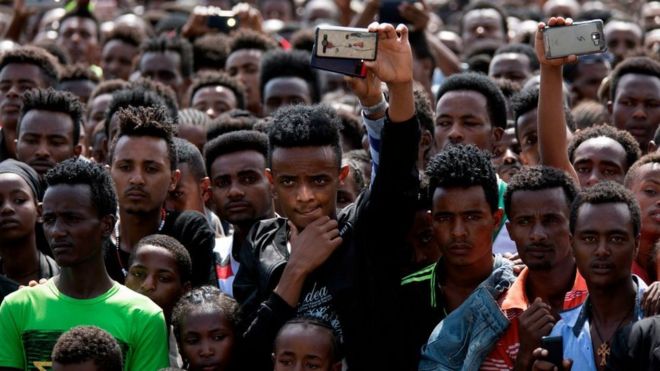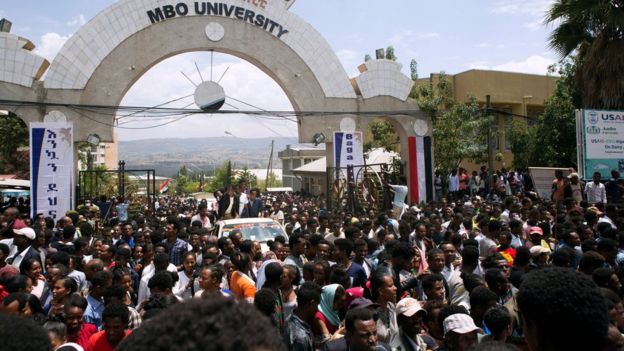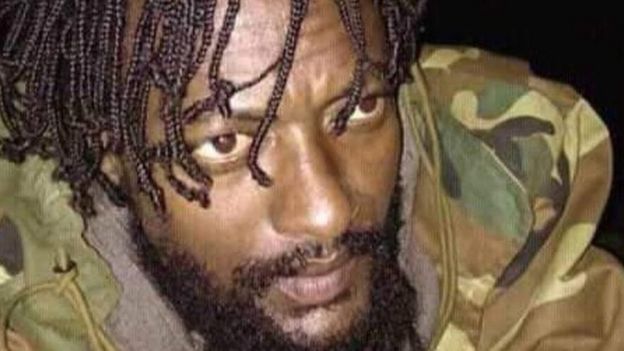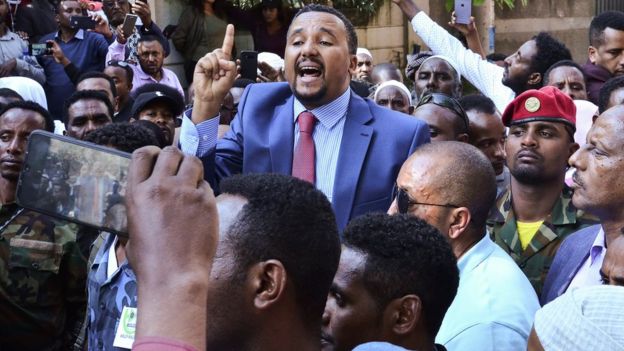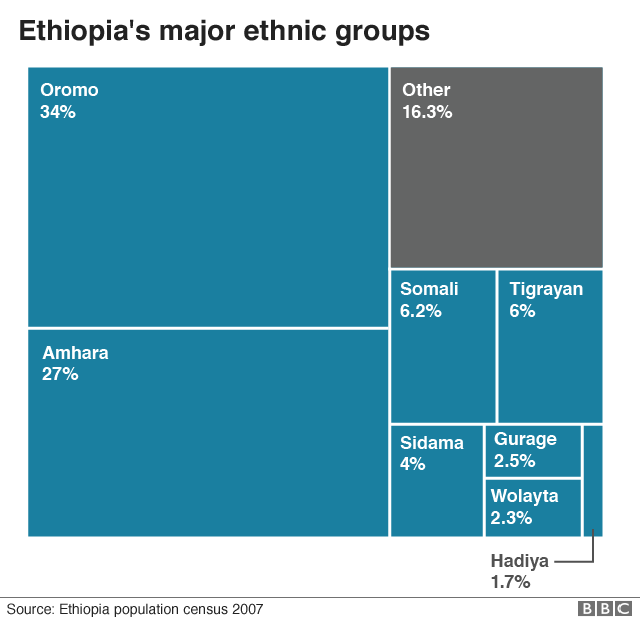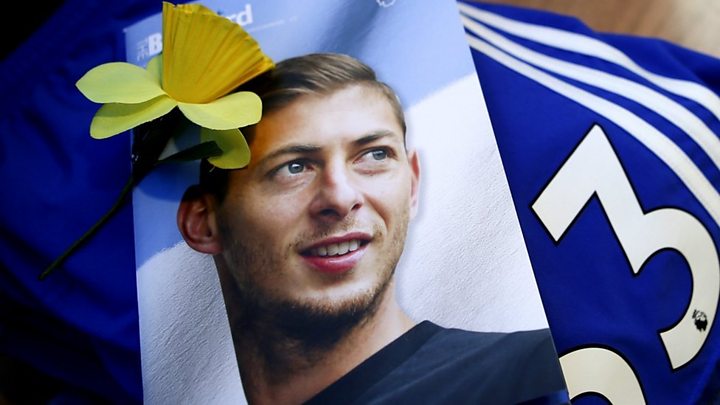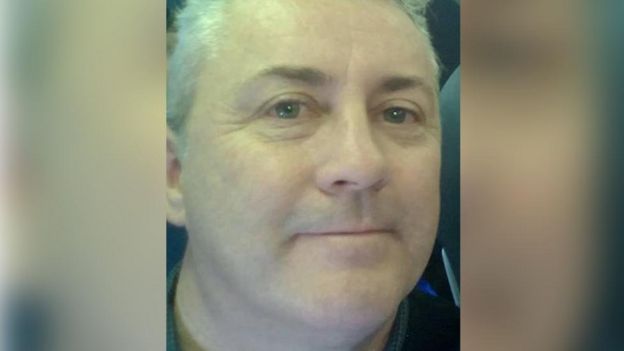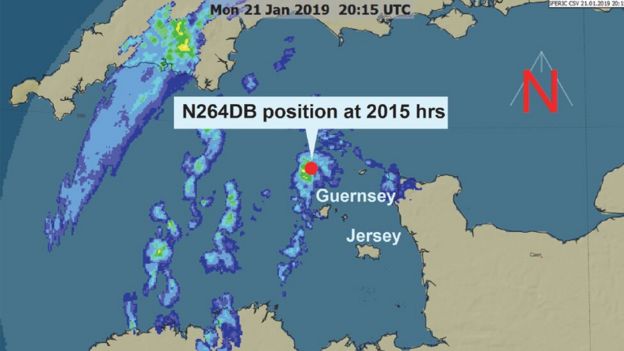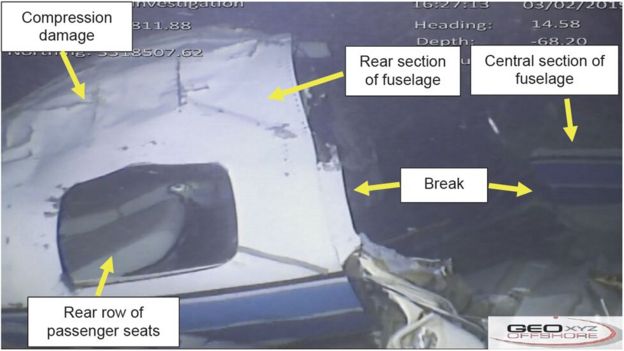By David Shukman Science editor 14 March 2020
Related Topics
Climate change

Image copyright JEFF OVERS
From Greta Thunberg to Donald Trump and airlines to oil companies, everyone is suddenly going crazy for trees.
The UK government has pledged to plant millions a year while other countries have schemes running into billions.
But are these grand ambitions achievable? How much carbon dioxide do trees really pull in from the atmosphere? And what happens to a forest, planted amid a fanfare, over the following decades?
How many will the UK plant?
Last year's UK general election became a contest to look green.
The Conservatives' pledge of planting 30 million trees a year, confirmed in the Budget this week, is a big step up on current rates. Critics wonder whether it's possible given that earlier targets were far easier and weren't met.
If the new planting rate is achieved, it would lead to something like 17% of the UK becoming forested, as opposed to 13% now.
Tree planting is a popular idea because forests are not only beautiful but also useful: they support wildlife, help with holding back floodwater and provide timber.
 At top speed, Canadian Shelby Barber can plant more than 4,000 trees a day
At top speed, Canadian Shelby Barber can plant more than 4,000 trees a day
And trees absorb carbon dioxide - the main gas heating the planet - so planting more of them is seen by many as a climate change solution.
At the moment, the UK's forests pull in about 10 million tonnes of carbon dioxide a year but the hope is to more than double that.
Tree planting: Where can I do it and which type is best?
It would involve potentially sensitive decisions about where to turn fields into forests: for example, should trees be planted where crops are grown or where cattle or sheep are grazed?
And because it can take decades to get a financial return from trees, many farmers and landowners are waiting for the government to announce new incentives.
Can you plant that many?
Yes, with the right people.
I watched a team of people in their 20s working on a project for the Forestry Commission, in Norfolk, and their speed was phenomenal. When they got going, I timed each of them planting a tree roughly every four seconds.
During the course of a day, they could plant between 2,000 and 4,000 trees, piercing the soil with a shovel, stooping down to bury the roots of a tiny Douglas Fir, pressing the sapling in with a boot, and then pacing out the gap to the next one.
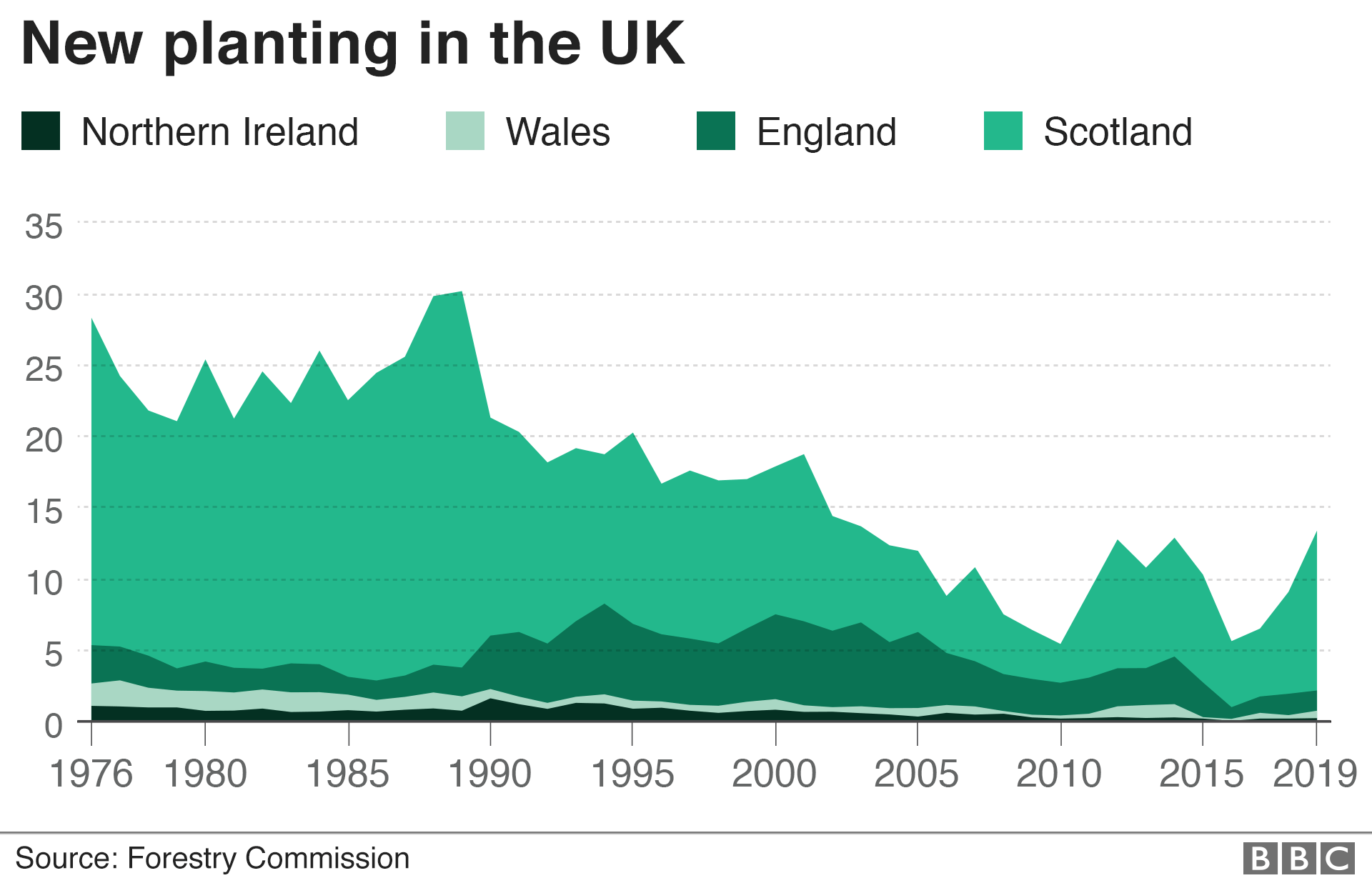
There are machines that can do the job - and even drones - but people power is the tried and tested method. And good money can be earned - about 7p for every tree.
For years, it's been popular among students in Canada as a summer job. But inspiring the same enthusiasm among British people is a different story.
Liz Boivin, whose company Tomorrow's Forests employs the team I visited, finds it is Canadians, Australians and eastern Europeans who most regularly sign up for a season's work.
She doubts whether there are enough trained staff in Britain to support the government's plans for a huge increase in planting.
"You need to have the workforce to hit those numbers, which at the moment you don't have," she says.
What problems could there be?
Trees grow very slowly so it's not enough just to plant them and then walk away.
In their early years, saplings are extremely vulnerable to a long list of threats: droughts, storms, pests and diseases. So it's possible that around a quarter of a newly-planted forest will die young.
Only when the survivors make it to an age of 20-30 years do they draw in significant amounts of carbon dioxide. By this stage, the forest will only thrive if some trees are removed or "thinned" to allow more room for others to develop.
If the timber from the cleared trees is then used in buildings, the carbon will remain locked up for as long as the structure stands. But if the trees are left unattended and end up dying and rotting, all the carbon that had been stored will then be released.

Can trees stop climate change?
The answer is more complicated than you might think.
Trees use carbon dioxide as part of the process of photosynthesis - with the carbon ending up in the branches, trunk and roots. But at the same time they rely on respiration, which releases some carbon dioxide.
That's why, over the years, people have described trees as "breathing" - inhaling and exhaling a flow of gases. And it turns out that understanding exactly how that flow works is extremely hard.
Prof Rob MacKenzie, of the University of Birmingham, is honest about the lack of knowledge. "There are lots of things we don't know about the precise movement of carbon."

We're in a hi-tech outdoor laboratory that he runs in a forest in Staffordshire.
Instruments are mounted on tree trunks and on the ground to measure every aspect of how the trees are functioning. Research so far has shown that every square metre draws in about 1,700g of CO2 every year - while also releasing up to 1,200g.
And as a forest gets older, those flows are likely to become more balanced. Prof MacKenzie says it would be a "disaster" if governments and companies rely on forests to "clear up the mess" of carbon pollution.
And he paints a grim picture of what could go wrong. "We plant lot of trees, we think we've done the job, we forget about them, and what we're left with is a really desolate dying diseased landscape that no one cares about."
So what are the solutions?
Partly, they involve choosing the right trees and partly it's about making sure that local people benefit.
In the sprawling forest of Thetford, in Norfolk, much of it planted in a rush after the First World War, Eleanor Tew has researched the best options.
Back in the 1960s and 1970s, a government-encouraged rash of planting ended up with regimented rows of the same species of conifers - which meant they were susceptible to the same pests and diseases.
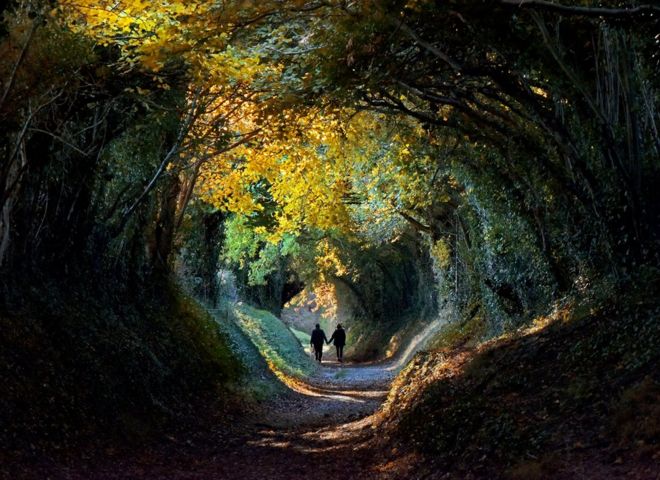
From Greta Thunberg to Donald Trump and airlines to oil companies, everyone is suddenly going crazy for trees.
The UK government has pledged to plant millions a year while other countries have schemes running into billions.
But are these grand ambitions achievable? How much carbon dioxide do trees really pull in from the atmosphere? And what happens to a forest, planted amid a fanfare, over the following decades?
How many will the UK plant?
Last year's UK general election became a contest to look green.
The Conservatives' pledge of planting 30 million trees a year, confirmed in the Budget this week, is a big step up on current rates. Critics wonder whether it's possible given that earlier targets were far easier and weren't met.
If the new planting rate is achieved, it would lead to something like 17% of the UK becoming forested, as opposed to 13% now.
Tree planting is a popular idea because forests are not only beautiful but also useful: they support wildlife, help with holding back floodwater and provide timber.
 At top speed, Canadian Shelby Barber can plant more than 4,000 trees a day
At top speed, Canadian Shelby Barber can plant more than 4,000 trees a dayAnd trees absorb carbon dioxide - the main gas heating the planet - so planting more of them is seen by many as a climate change solution.
At the moment, the UK's forests pull in about 10 million tonnes of carbon dioxide a year but the hope is to more than double that.
Tree planting: Where can I do it and which type is best?
It would involve potentially sensitive decisions about where to turn fields into forests: for example, should trees be planted where crops are grown or where cattle or sheep are grazed?
And because it can take decades to get a financial return from trees, many farmers and landowners are waiting for the government to announce new incentives.
Can you plant that many?
Yes, with the right people.
I watched a team of people in their 20s working on a project for the Forestry Commission, in Norfolk, and their speed was phenomenal. When they got going, I timed each of them planting a tree roughly every four seconds.
During the course of a day, they could plant between 2,000 and 4,000 trees, piercing the soil with a shovel, stooping down to bury the roots of a tiny Douglas Fir, pressing the sapling in with a boot, and then pacing out the gap to the next one.

There are machines that can do the job - and even drones - but people power is the tried and tested method. And good money can be earned - about 7p for every tree.
For years, it's been popular among students in Canada as a summer job. But inspiring the same enthusiasm among British people is a different story.
Liz Boivin, whose company Tomorrow's Forests employs the team I visited, finds it is Canadians, Australians and eastern Europeans who most regularly sign up for a season's work.
She doubts whether there are enough trained staff in Britain to support the government's plans for a huge increase in planting.
"You need to have the workforce to hit those numbers, which at the moment you don't have," she says.
What problems could there be?
Trees grow very slowly so it's not enough just to plant them and then walk away.
In their early years, saplings are extremely vulnerable to a long list of threats: droughts, storms, pests and diseases. So it's possible that around a quarter of a newly-planted forest will die young.
Only when the survivors make it to an age of 20-30 years do they draw in significant amounts of carbon dioxide. By this stage, the forest will only thrive if some trees are removed or "thinned" to allow more room for others to develop.
If the timber from the cleared trees is then used in buildings, the carbon will remain locked up for as long as the structure stands. But if the trees are left unattended and end up dying and rotting, all the carbon that had been stored will then be released.

Many of Britain's tree planters come from countries like Canada and Australia
So the key is a plan for careful management, according to Stuart Goodall, who runs Confor, a forest industries association. He's worried that the mania for trees may turn out to be a passing fashion, with investors excited by the planting but not by the long years that follow.
"We don't want to be rushed by others who have taken a sudden interest and may run away in 5-10 years' time," he says.
For a big increase in tree planting, Mr Goodall says there will need to be far greater supply of saplings but British nurseries are wary of scaling up until they're sure the government is serious.
So the key is a plan for careful management, according to Stuart Goodall, who runs Confor, a forest industries association. He's worried that the mania for trees may turn out to be a passing fashion, with investors excited by the planting but not by the long years that follow.
"We don't want to be rushed by others who have taken a sudden interest and may run away in 5-10 years' time," he says.
For a big increase in tree planting, Mr Goodall says there will need to be far greater supply of saplings but British nurseries are wary of scaling up until they're sure the government is serious.
Can trees stop climate change?
The answer is more complicated than you might think.
Trees use carbon dioxide as part of the process of photosynthesis - with the carbon ending up in the branches, trunk and roots. But at the same time they rely on respiration, which releases some carbon dioxide.
That's why, over the years, people have described trees as "breathing" - inhaling and exhaling a flow of gases. And it turns out that understanding exactly how that flow works is extremely hard.
Prof Rob MacKenzie, of the University of Birmingham, is honest about the lack of knowledge. "There are lots of things we don't know about the precise movement of carbon."

We're in a hi-tech outdoor laboratory that he runs in a forest in Staffordshire.
Instruments are mounted on tree trunks and on the ground to measure every aspect of how the trees are functioning. Research so far has shown that every square metre draws in about 1,700g of CO2 every year - while also releasing up to 1,200g.
And as a forest gets older, those flows are likely to become more balanced. Prof MacKenzie says it would be a "disaster" if governments and companies rely on forests to "clear up the mess" of carbon pollution.
And he paints a grim picture of what could go wrong. "We plant lot of trees, we think we've done the job, we forget about them, and what we're left with is a really desolate dying diseased landscape that no one cares about."
So what are the solutions?
Partly, they involve choosing the right trees and partly it's about making sure that local people benefit.
In the sprawling forest of Thetford, in Norfolk, much of it planted in a rush after the First World War, Eleanor Tew has researched the best options.
Back in the 1960s and 1970s, a government-encouraged rash of planting ended up with regimented rows of the same species of conifers - which meant they were susceptible to the same pests and diseases.

Image copyright JEFF OVERS
Planting trees without a plan can end up doing "more harm than good"
For Eleanor, it's important to make sure that future forests are more resilient.
"It's a bit like making sure you don't put all your eggs in one basket," she says. "It may seem that the obvious thing is to plant one species that's really good for timber or another species that's good for carbon but if they don't cope with a disease, then the whole forest fails."
And for Nathalie Seddon, professor of biodiversity at the University of Oxford, it's vital that forestry schemes, particularly in developing countries, aren't imposed on the people there, but instead involve them.
She points to a project in the Humbo region of Ethiopia where farmers were encouraged to regenerate woodland by being given legal rights over the trees and also by getting training in forest management.
By contrast, a forestry scheme in northwest China successfully protected people living there from dust storms - a positive development - but the growth of the trees then led to water shortages in villages downstream.
She says: "There is an idea that you can just buy land and plant trees but that's too simplistic - there is a risk of doing more harm than good."
Follow David on Twitter.

CLIMATE CHANGE: A really simple guide
A TO Z: Climate-related words and phrases explained
YOUR HOME: How much warmer is your city?
FOOD: What is your diet's carbon footprint?
IN CHARTS: How warm has the world got?
For Eleanor, it's important to make sure that future forests are more resilient.
"It's a bit like making sure you don't put all your eggs in one basket," she says. "It may seem that the obvious thing is to plant one species that's really good for timber or another species that's good for carbon but if they don't cope with a disease, then the whole forest fails."
And for Nathalie Seddon, professor of biodiversity at the University of Oxford, it's vital that forestry schemes, particularly in developing countries, aren't imposed on the people there, but instead involve them.
She points to a project in the Humbo region of Ethiopia where farmers were encouraged to regenerate woodland by being given legal rights over the trees and also by getting training in forest management.
By contrast, a forestry scheme in northwest China successfully protected people living there from dust storms - a positive development - but the growth of the trees then led to water shortages in villages downstream.
She says: "There is an idea that you can just buy land and plant trees but that's too simplistic - there is a risk of doing more harm than good."
Follow David on Twitter.
CLIMATE CHANGE: A really simple guide
A TO Z: Climate-related words and phrases explained
YOUR HOME: How much warmer is your city?
FOOD: What is your diet's carbon footprint?
IN CHARTS: How warm has the world got?
